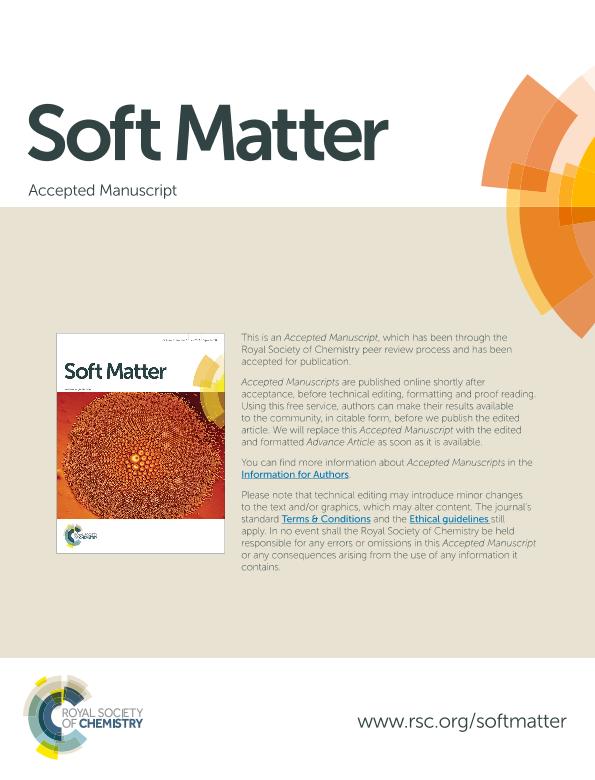Artículo
Anisotropic reversible piezoresistivity in magneticmetallic/polymer structured elastomer composites: modelling and experiments
Fecha de publicación:
01/2016
Editorial:
Royal Society of Chemistry
Revista:
Soft Matter
ISSN:
1744-683X
Idioma:
Inglés
Tipo de recurso:
Artículo publicado
Clasificación temática:
Resumen
Structured elastomeric composites (SECs) with electrically conductive fillers display anisotropic piezoresistivity. The fillers do not form string-of-particle structures but pseudo-chains formed by grouping micro-sized clusters containing nanomagnetic particles surrounded by noble metals (e.g. silver, Ag). The pseudo-chains are formed when curing or preparing the composite in the presence of a uniform magnetic field, thus pseudo-chains are aligned in the direction of the field. The electrical conduction through pseudo-chains is analyzed and a constitutive model for the anisotropic reversible piezoresistivity in SECs is proposed. Several effects and characteristics, such as electron tunnelling, conduction inside the pseudo-chains, and chain-contact resistivity, are included in the model. Experimental results of electrical resistance, R, as a function of the normal stress applied in the direction of the pseudo-chains, P, are very well fitted by the model in the case of Fe3O4[Ag] microparticles magnetically aligned while curing in polydimethylsiloxane, PDMS. The cross sensitivity of different parameters (like the potential barrier and the effective distance for electron tunnelling) is evaluated. The model predicts the presence of several gaps for electron tunnelling inside the pseudo-chains. Estimates of those parameters for the mentioned experimental system under strains up to 20% are presented. Simulations of the expected response for other systems are performed showing the influence of Young's modulus and other parameters on the predicted piezoresistivity.
Palabras clave:
Elastomeric Composites
,
Piezoresistivity
Archivos asociados
Licencia
Identificadores
Colecciones
Articulos(IFIBA)
Articulos de INST.DE FISICA DE BUENOS AIRES
Articulos de INST.DE FISICA DE BUENOS AIRES
Articulos(INQUIMAE)
Articulos de INST.D/QUIM FIS D/L MATERIALES MEDIOAMB Y ENERGIA
Articulos de INST.D/QUIM FIS D/L MATERIALES MEDIOAMB Y ENERGIA
Citación
Mietta, José Luis; Tamborenea, Pablo Ignacio; Negri, Ricardo Martin; Anisotropic reversible piezoresistivity in magneticmetallic/polymer structured elastomer composites: modelling and experiments; Royal Society of Chemistry; Soft Matter; 12; 2; 1-2016; 422-431
Compartir
Altmétricas




